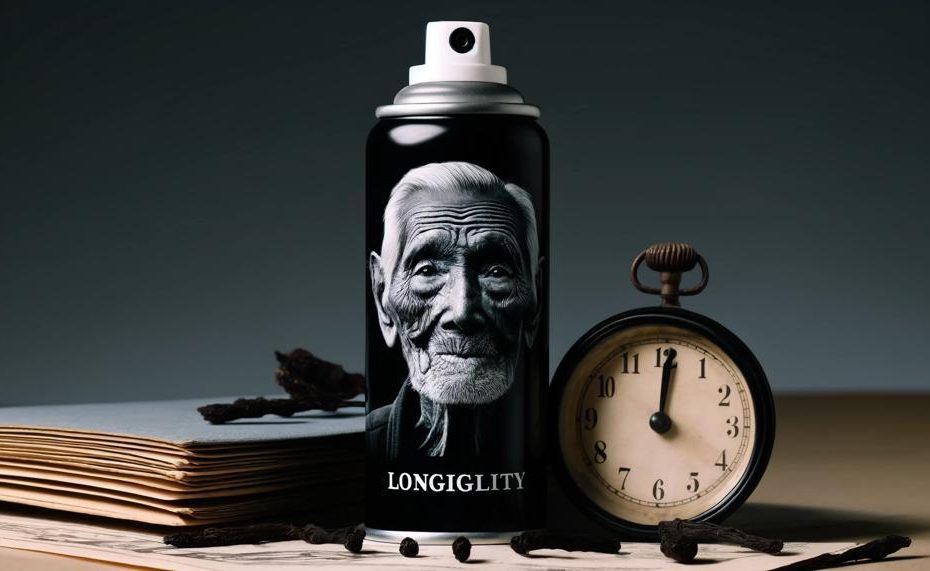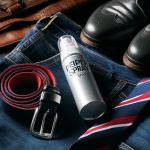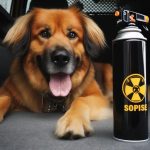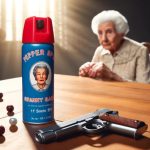Did you know that during a protest, when pepper spray is deployed, its impact isn’t just felt on the skin and in the eyes of those directly hit? The particles of this potent irritant can actually linger in the air, affecting people and the environment well beyond the immediate vicinity of its deployment.
This phenomenon raises intriguing questions about the behavior of aerosols and the persistent nature of chemical agents like capsaicin, the active component in pepper spray.
In this blog post, we’ll unravel the surprising longevity of pepper spray in the air and its broader implications.
So, how long does pepper spray last in the air?
Pepper spray can last in the air for a short duration or as long as 30 minutes, depending on the airflow in the location. In well-ventilated areas with open windows and air circulation, the lingering smell may last only a few minutes. However, in rooms with little ventilation, it can last up to 30 minutes. Please note that the physical discomfort might persist for a few hours, and full recovery might take up to 24 hours, depending on exposure and individual sensitivity. It’s important to ventilate the area after use to help dissipate the spray.
Let’s get started.
Contents
- 1 How Long Does Pepper Spray Last In The Air?
- 2 Factors Affecting the Duration of Pepper Spray in the Air
- 3 Understanding Scoville Heat Units (SHU)
- 4 Differences Between Law Enforcement and Consumer-Grade Sprays
- 5 How to Properly Store and Maintain Pepper Spray Potency
- 6 Using Pepper Spray for Self-Defense: Tips and Techniques
- 7 Potential Risks and Side Effects of Pepper Spray Exposure
- 8 Conclusion
How Long Does Pepper Spray Last In The Air?
The duration of pepper spray in the air is influenced by a myriad of factors, each contributing to how long its incapacitating effects linger in the environment.
| Factor | Description | Impact on Duration |
|---|---|---|
| Environmental Conditions | Includes wind speed, humidity, and temperature. | High wind can disperse the spray faster, reducing its duration. High humidity can prolong the effects, while extreme temperatures can either evaporate or condense the spray more quickly. |
| Method of Delivery | Refers to the type of spray pattern (stream, fog, gel, foam). | Stream sprays may linger less than fog sprays due to their concentrated nature. Gels and foams stick to surfaces and may not disperse into the air as readily. |
| Distance Between User and Target | The space over which the spray must travel. | The farther the distance, the more dispersed the spray becomes before landing, potentially shortening its air-bound duration. |
| Canister Size and Design | Relates to the volume and mechanics of the spray canister. | Larger canisters may release more content into the air, potentially increasing duration. The design influences how finely the spray is atomized. |
| Air Circulation | The movement of air in the environment where pepper spray is released. | Enclosed spaces with poor ventilation might see longer-lasting effects in the air, whereas open or well-ventilated areas may experience quicker dissipation. |
| Concentration of Capsaicinoids | The amount of active ingredient in the pepper spray. | Higher concentrations can result in a more potent and possibly longer-lasting presence in the air due to stronger initial dispersal. |
In essence, how long pepper spray lasts in the air is not a straightforward answer due to these influencing factors.
The interplay between environmental conditions, method of delivery, distance involved, canister specifics, and active ingredient concentration all play pivotal roles.
Factors Affecting the Duration of Pepper Spray in the Air
The key factors influencing how long pepper spray hangs about in the air are as varied as the scenarios in which it might be deployed.
Whether you’re thinking about self-defence or crowd control, knowing what affects its airtime can give you an edge.
| Factor | Description | Impact on Duration |
| Delivery Method | The way in which the pepper spray is dispersed (stream, fog, gel, foam). | Different methods spread the particles over varying distances and areas, affecting how long they remain airborne. |
| Distance from Target | How far the spray travels before reaching its target. | Longer distances mean more time for the spray to disperse into the air. |
| External Environmental Conditions | Weather conditions like wind, rain, and temperature. | Wind can carry the spray further or dissipate it quickly, while rain can wash it away. Extreme temperatures can alter the spray’s effectiveness and duration in the air. |
| Size and Capacity of Canister | The amount of pepper spray the canister can hold and release. | Larger canisters can disperse more product, potentially increasing airtime. |
| Design of the Canister’s Delivery System | The mechanism by which the spray is expelled (pressure, aerosol). | Different systems can change the spray’s velocity and how finely it is atomized, affecting hang time. |
| Age and Storage Conditions of Canister | The shelf life of the pepper spray and how it has been kept. | Older or poorly stored canisters may not perform as expected, potentially shortening or lengthening duration in unpredictable ways. |
Understanding these factors gives you a leg up when it comes to using pepper spray effectively. For instance, a breezy day might not be the best time to rely on a fogger delivery method if you’re aiming for precision.
On the flip side, a gel-based pepper spray might stick around longer, even under less-than-ideal conditions. Remember, though, that with great power comes great responsibility.
Understanding Scoville Heat Units (SHU)
The significance of Scoville Heat Units (SHU) in determining the strength and duration of pepper spray in the air lies in its precise measurement of capsaicin concentration.
This metric is crucial for understanding the potency and expected impact of pepper spray upon deployment, directly affecting its effectiveness as a self-defense tool.
Potency and Efficacy:
Capsaicin, the fiery component found in chili peppers and pepper sprays, is what gives these items their heat. Measuring this heat in SHU allows for a clear comparison of potency. The higher the SHU, the more potent the pepper spray.
This potency translates to how effectively the spray can incapacitate an attacker, with higher SHU ratings indicating a more intense and immediate reaction upon contact.
Duration in Air:
The strength, measured in SHU, also influences how long the effects of pepper spray linger in the air.
A higher SHU rating often means that smaller amounts of capsaicin are needed to achieve the desired defensive effect, potentially reducing the time it remains airborne but increasing its immediate incapacitating effects.
Impact on Target:
The interaction with the body’s TRPV1 receptor means that the higher the SHU, the more severe the temporary blindness, difficulty breathing, and pain will be.
This is crucial for self-defense situations where immediate incapacitation of an assailant could provide vital seconds for escape.
Tolerance Levels:
Understanding SHU is important not just for immediate effects but also in predicting potential tolerance levels.
Regular exposure to capsaicin can lead to increased tolerance, meaning individuals frequently exposed to lower SHU ratings might have reduced reactions over time.
Table Comparing Pepper Spray and Chili Peppers by SHU:
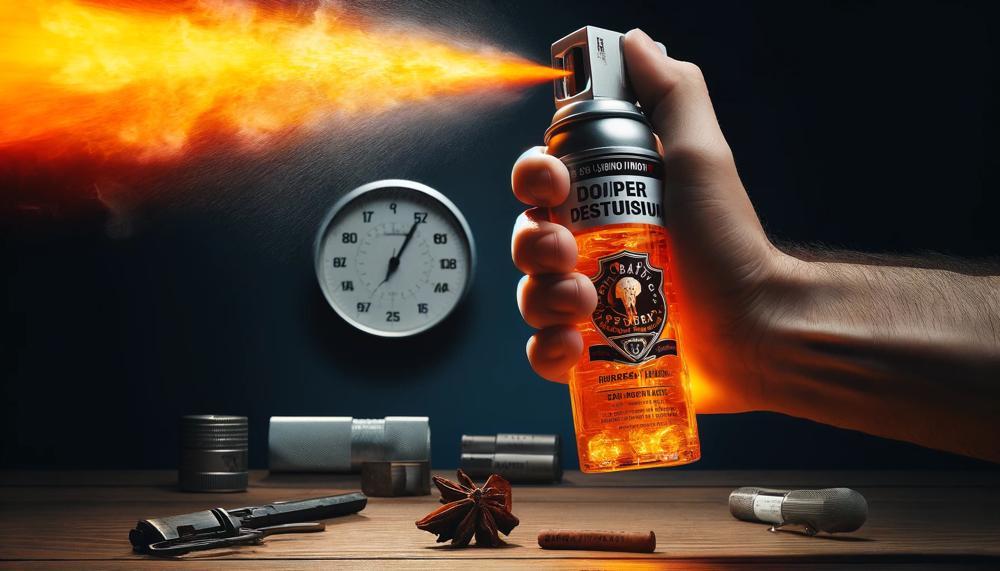
| Item | SHU Range | Significance |
| Pepper Spray | 2 million to 5.3 million | Highly effective for self-defense with immediate and intense effects. |
| Hottest Chili Peppers | Up to 2.2 million (Carolina Reaper) | Even the hottest peppers fall short of most pepper sprays in terms of heat. |
| Common Hot Sauces | 2,500 to 8,000 | Mild in comparison; showcases the vast difference in capsaicin concentration. |
Differences Between Law Enforcement and Consumer-Grade Sprays
| Aspect | Law Enforcement-Grade Sprays | Consumer-Grade Sprays |
|---|---|---|
| Active Ingredients Concentration | Higher, leading to more potent effects. | Lower, designed for civilian safety and legal compliance. |
| Duration of Effects | Longer-lasting due to the high concentration of capsaicinoids. | Shorter, aiming to temporarily incapacitate without prolonged distress. |
| Effectiveness in Air | Designed to remain effective over greater distances and in varied environmental conditions. | More susceptible to wind and environmental factors, best at close range. |
| User Accessibility | Restricted to trained professionals in law enforcement and security. | Widely available for personal defense with user-friendly mechanisms. |
| Delivery Methods | Variety of formats for different operational needs (e.g., stream, fog, gel). | Typically available in compact sizes and simplified formats for ease of use. |
| Regulatory Compliance | Must meet specific standards for law enforcement use; subject to regulatory oversight. | Made to comply with legal restrictions for civilian use, varying by jurisdiction. |
The table above elucidates the primary distinctions between law enforcement-grade and consumer-grade pepper sprays, specifically focusing on their duration and effectiveness in the air.
Law enforcement sprays are formulated with a higher concentration of active ingredients, making them more potent and long-lasting.
They’re crafted to stay effective across a broader range of distances and against various environmental factors.
In comparison, consumer-grade sprays are designed for immediate, short-term incapacitation, prioritizing ease of use and legal compliance for everyday individuals seeking personal safety.
How to Properly Store and Maintain Pepper Spray Potency
To safeguard the potency of pepper spray and ensure it serves as an effective personal safety tool, understanding the impact of improper storage and adopting correct maintenance practices is crucial.
Impact of Improper Storage on Potency
| Factor | Effect on Potency | Rationale |
| Exposure to Extreme Temperatures | Degradation | High heat or freezing temperatures can break down the active compounds, reducing effectiveness. |
| Direct Sunlight | Deterioration | UV rays can alter chemical composition, leading to decreased potency. |
| Humidity and Moisture | Possible Leakage | Can cause internal canister corrosion, risking leaks and compromised spray integrity. |
Measures for Maintaining Effectiveness
- Cool, Dark Storage: Keep your pepper spray in a cool, dark place away from sunlight and extreme temperature variations. Ideal storage locations could be a drawer in your bedroom or a cabinet away from appliances that emit heat.
- Regular Inspections: Every few months, inspect the canister for signs of wear, damage, or leakage. Check the nozzle to ensure it isn’t clogged and test the spray mechanism by discharging a small amount in a safe outdoor area.
- Mind the Expiry Date: Always note the manufacturing or expiration date upon purchase. Replace the canister at least every two to four years or immediately if you notice any performance issues during inspections.
- Avoid Vehicle Storage: While it might seem convenient, storing pepper spray in your car is not advised due to significant temperature fluctuations which can impair its effectiveness.
- Proper Handling: Familiarise yourself with the operation of your pepper spray. Avoid shaking it excessively and ensure it’s always kept in an upright position to maintain pressure and prevent leakage.
- Knowledge of Use: Beyond storage, knowing how to use pepper spray effectively is paramount. Understand the operational range, spray pattern (stream, fog, gel), and how wind conditions can affect its deployment.
By adhering to these guidelines, you can maintain the potency of your pepper spray, ensuring it remains a reliable self-defense tool when you need it most.
Using Pepper Spray for Self-Defense: Tips and Techniques
To effectively use pepper spray for self-defense, it’s essential to grasp not just the mechanics of using the spray but also the strategic aspects that ensure its effectiveness.
| Aspect | Details | Tips |
|---|---|---|
| Accessibility | Having your pepper spray within easy reach is crucial. | Carry in a consistent place; consider a keychain model or one that clips to your belt. |
| Awareness of Range | Understanding the effective range of your pepper spray is key to using it successfully. | Check your product’s specifications; most sprays have a range of 3-10 feet. |
| Aiming Techniques | Aiming for the attacker’s face maximises the effectiveness of the spray. | Focus on hitting the eyes, nose, and mouth in short, controlled bursts. |
| Practice | Becoming familiar with your pepper spray’s operation and practicing its use can significantly improve your accuracy and confidence. | Practice aiming and deploying the spray in a safe environment to build muscle memory. |
| Legislation Awareness | Different regions have various laws regarding carrying and using pepper spray. | Research and comply with local laws to avoid legal issues. |
| Holding Technique | Proper grip and stance can enhance control and accuracy when deploying pepper spray. | Hold the canister with both hands if possible, keeping it at eye level for precise aim. |
| Familiarisation | Knowing your equipment’s specific features and limitations is essential. | Read the instructions thoroughly; understand how to unlock and deploy the spray quickly. |
Potential Risks and Side Effects of Pepper Spray Exposure
The potential risks and side effects of being exposed to pepper spray can range from immediate and acute to long-term health issues, impacting both physical and mental well-being.
The severity of these effects can vary based on the duration of exposure, proximity, and individual susceptibility.
| Side Effect | Immediate Impact | Potential Long-term Consequences |
| Ocular Issues | Intense burning, temporary blindness, and involuntary eye closure. | Extended visual impairment, increased sensitivity to light. |
| Respiratory Challenges | Difficulty breathing, coughing, sensation of choking. | Long-lasting respiratory issues, aggravated asthma or chronic bronchitis. |
| Skin Irritation | Severe burning sensation, redness, and blistering in some cases. | Persistent dermatitis, heightened skin sensitivity. |
| Mental Health Effects | Instant fear, panic reactions, and confusion. | Trauma, anxiety disorders, strained relations with law enforcement. |
| Neurological Effects | Dizziness, disorientation, headache. | Potential for neurological damage especially in young individuals with developing brains. |
| Increase in Infection Risk | Vulnerability due to compromised mucous membranes. | Elevated risk of illness especially in environments with prevalent pathogens like during a pandemic. |
Pepper spray exposure can lead to an array of complications. Immediate reactions often include unbearable pain and incapacitation—nature’s way of saying it’s no trifling matter. Beyond the immediate torment lies the spectre of lasting health woes; for instance, kiddos hit with pepper spray may face a future where their lungs wheeze more than a leaky accordion or their peepers sting at the mere hint of sunlight.
It’s not just about the physical aftermath. The psychological shadow cast by such an encounter can stretch long and dark. Imagine the fear etched into a child’s heart after being pepper-sprayed during what was meant to be a peaceful march. It’s a recipe for brewing distrust and trauma that could sour their perception of authority figures for years to come.
Experts are sounding the alarm bells loud and clear: using chemical irritants like pepper spray isn’t child’s play.
Conclusion
Pepper spray is a popular way to protect yourself, especially at meetings or when you feel unsafe. It is still a topic of growing interest and worry. The effects that it leaves behind can be as confusing as they are powerful. The environment, the pepper spray’s delivery method, and the amount of capsaicin all influence how long it remains in the air. Every part of this dramatic dance is important, from the wind’s whims to the design of the jar.
Finding out how long pepper spray stays in the air is not only a fun science experiment but also a key part of making good plans for public safety and crowd control. It also shows how important it is to know what to do when you come across it, from cleaning methods to noting and reducing the damage it does to the environment. Our research gives us a lot of different kinds of information that can help anyone who is planning for safety or just wants to learn more about this powerful tool.
As we work our way through the complicated world of pepper spray exposure, remember that information is just as important as air.
